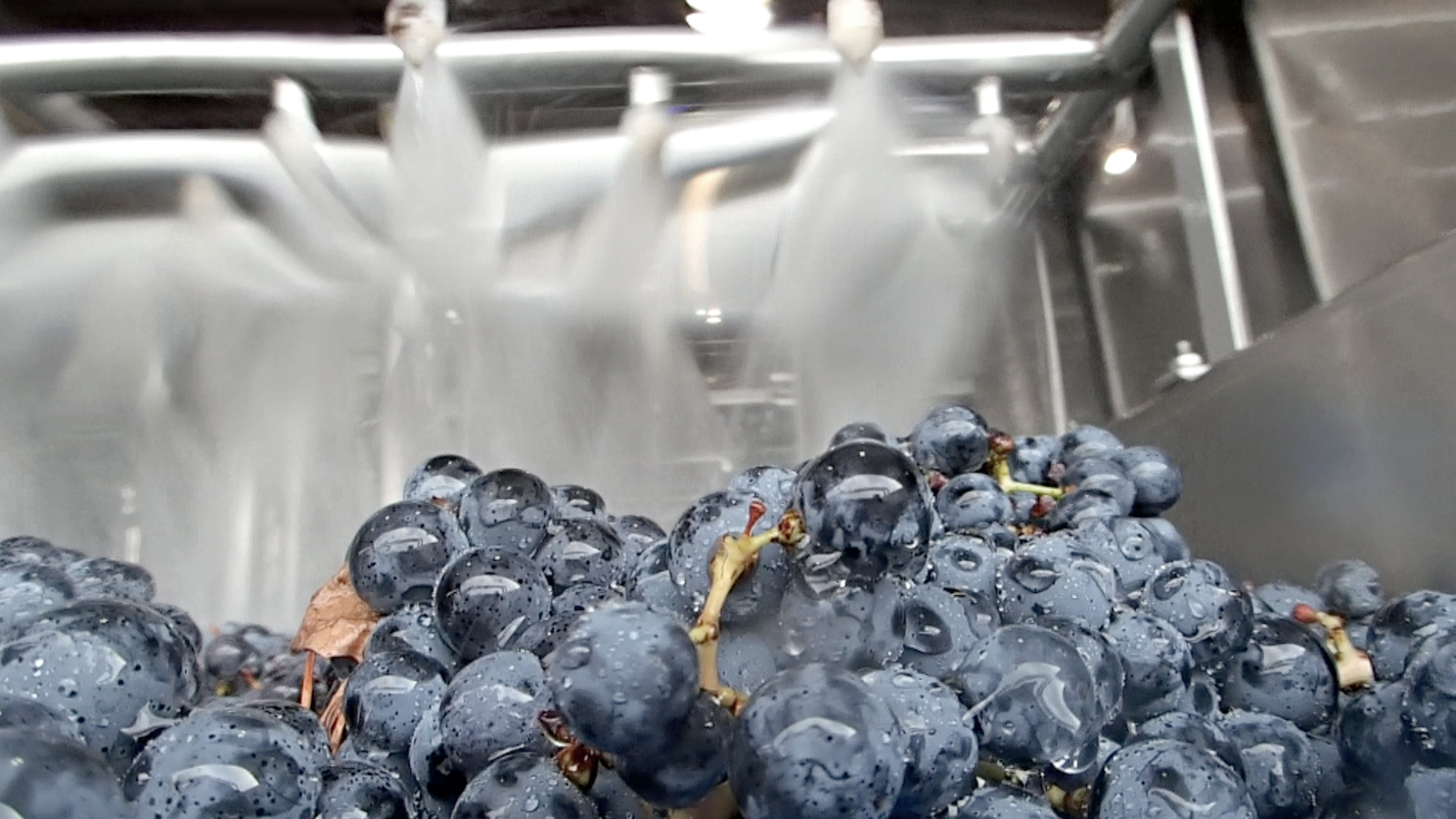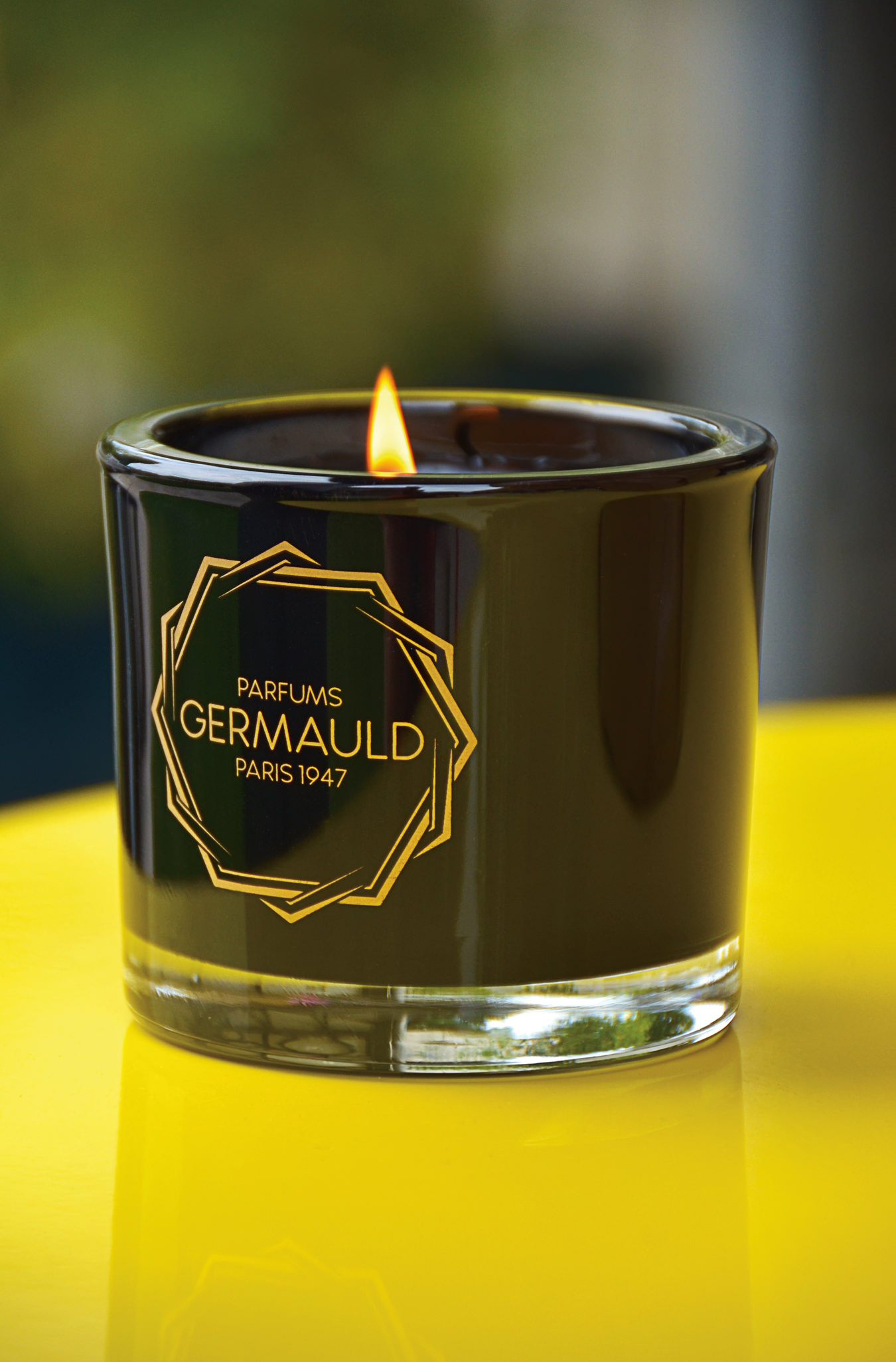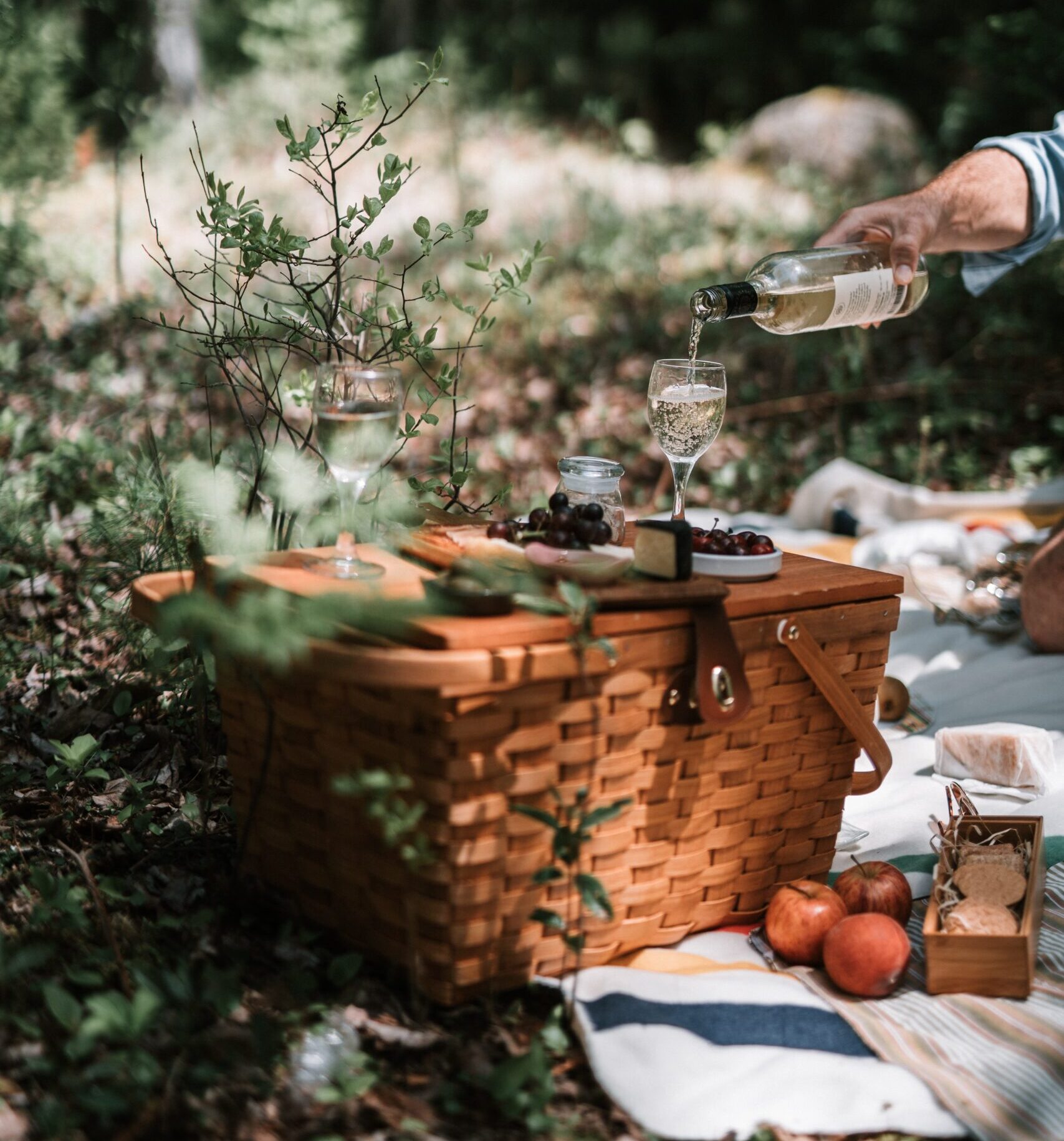Champagne, the One and Only
The wine and the region.
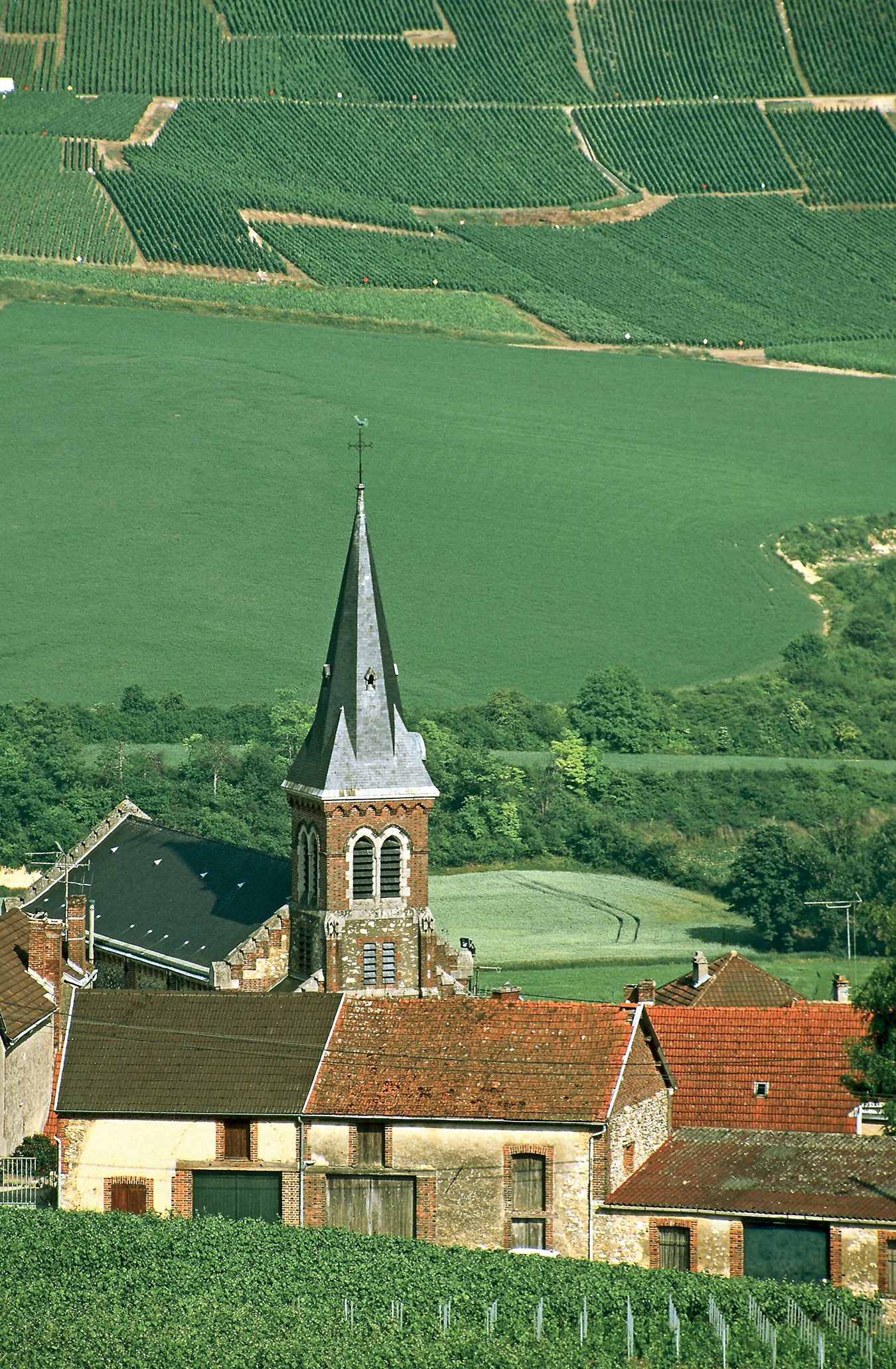
En route to Reims by SNCF train, having arrived at Gare de l’Est in time to watch the sun rise over those Parisian rooftops even Disney could not quite render lovely enough, you have almost no time for remorse, having left the City of Light with no more than a petit café and choux in the station, the pigeons and sparrows discreetly mooching crumbs, should you have them to spare. No remorse, because this is the way to the Vallée de la Marne and the Champagne region. It is a 45-minute non-stop shot almost directly east of Paris. Trains are a great thing in France: quiet, comfortable, generally on time, full of people with purposeful travel in mind. So heading into the Champagne region for a visit, you have the added pleasure of knowing the only pressure you will have this day is in deciding whether or not you can resist the inevitable foie gras at the forthcoming evening’s repast.
The entire area has four distinct components, each with its own Route Touristique du Champagne. They are Massif de Saint Thierry; Montagne de Reims; Vallée de la Marne; and Côte des Blancs. The first two of these are the regions for pinot noir and pinot meunier production, the latter two more for chardonnay. The three varietals together comprise the entirety of champagne production, and most champagnes use a blend of all three, often somewhere around 50 per cent chardonnay, 35 per cent pinot noir and 15 per cent pinot meunier, though this is a vast generalization; the grande cuvées are often made only with pinot noir, and the blanc de blancs are made strictly from chardonnay.
Each producer, including the major houses, has its own way of blending. Add to that the large number of different plots of grapes, and the potential to use one or even two vintages of reserve wines from the two previous vintages when making a particular non-vintage cuvée, and you realize how complex champagne production really is. Even the most extensive tasting here in North America cannot give you the sense of this picturesque, vibrant region, and all the vinicultural diversity that a personal visit provides.
You are riding into history when you travel through this region. The pastoral countryside, with the uniquely French approach to agriculture in evidence in the pastures and fields has, since before the Romans, acted as something of a highway for invaders. The Romans, though, have left an indelible mark here, in the little amphitheatre marketplace that now acts as an art gallery in the centre of Reims, and in much of the architecture. But most importantly, for our purposes, are the caverns they excavated, extracting chalk from the earth and making roads and buildings with it. These caverns, called crayères, are intact from those times; they are in effect pyramid-shaped chambers, narrow at the top, at ground level, with an aperture less than two metres in circumference, opening in an ever-widening downward arc so that, at the bottom, often 30 metres below the surface, the chambers are many dozens of metres wide.
The Champagne region has quite a history in terms of the wine trade, and from the earliest days it was internationally oriented, and was led by some intrepid widows who decided to develop the business rather than fold it. These ladies, veuves, brought the first champagne wines to Russia. At Pommery, the British market was developed rigorously, and at Laurent-Perrier, other European markets, as well as the British and Russian, were developed. Those companies, as well as Veuve Clicquot, were headed by young widows; in the case of Clicquot, an immense archive of historical documents and letters is at this moment being examined, the early results of which show how commerce, business practices and the development export markets were carried out in the 18th century. The crayères play a vital role. In some instances, they were connected by tunnels. At Pommery, there are nearly 19 kilometres of tunnels, and at Veuve Clicquot, 24 kilometres, connecting more than a dozen of these immense chambers.
Champagne is made by harvesting grapes, pressing them and making juice, which is then fermented. The fermented juice is bottled as still wine, and aged for a time. Then, a liqueur de tirage (melted cane sugar) is added, along with some yeast, which causes a second, in-bottle fermentation. The resulting release of carbon dioxide is captured in the wine, inducing what will appear upon pouring as those magical tiny bubbles, and creating the wine that has no equal, though it has inspired many imitators. The remuage, or riddling process, in which the bottles are gradually both rotated by quarter-turns and inverted, allows any sediment to settle in the neck of the bottle. The neck is then dipped in freezing brine, and the resulting plug of material is disgorged; a bit of supplementary wine, the dosage, is added, and the bottle is corked and packaged. It then ages until the ideal market-release time. The wine is aged a minimum of two years for non-vintage, and five years for vintage wines. Many houses, though, choose to age longer, based on optimum time in cellar before the release to market. Taittinger, as one example, often lets its non-vintage brut age for three years, and the vintage for seven. The cellar systems that were created in the early days are instrumental in the entire process, since temperatures are a steady nine or 10 degrees Celsius year-round. The wines age well, and the entire process is immune to any dangerous temperature fluctuations.
The question of how the bubbles form that magical, repetitive bead, or mousse, once it is poured into a glass is to this day the subject of high-tech study and somewhat lower-tech debate. But the overall consensus is that imperfections (or perhaps microscopic matter on the surface of each glass) allow the sleeping carbon dioxide to be released, and the resulting bubbles rise in a consistent pattern to the surface of the liquid. Like snowflakes, therefore, no two glasses of champagne bubble exactly the same way. Regardless, the smaller the bubble, the finer the wine is assumed to be. The old-fashioned coupe—with its open, round bowl said to be originally designed as an homage to the bosom of Madame de Pompadour—gave way to the much more efficient tasting vessel we now know as the flute, with its smaller circumference and taller stature yielding two significant benefits: a more acute bouquet, and extended beading time, so that mousse can flourish in-glass for much longer than any individual drinker might care to leave it.
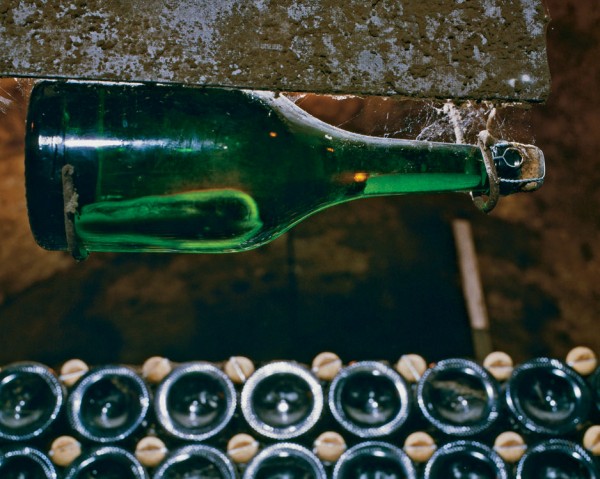
Photo by Yvon Monet.
These days, much of the production process is done by intricate machines rather than by hand, and some folks worry about de-romanticizing the product. Riddling, in fact, is done by hand at a few houses, but only because special bottles are used for their special cuvées, and no existing machine can “fit” these bottles. But efficiency and optimal results don’t lie: the resulting drink is still “riddled”, that is, turned a quarter-turn in a regular rotation to settle the sediment, and the old rationale for every step in the process is still honoured, so that great results in large numbers are now possible. The process was refined over the course of decades, which have now become centuries. (The first champagne celebration of note was, in fact, when Saint Rémi converted King Clovis to Christianity, on Christmas Day, AD 496.)
The soil is key to all of this. In the cellars at Delamotte and Salon, a three-metre-high section of the famous chalk surrounding the winery was left open, so that visitors may touch and smell it. It is therefore not a stretch to imagine that vines growing in and seeking nourishment from this soil will be working very hard indeed. And that stress results in concentrated, unique, deep flavours. The regions around Épernay and Ay, with little villages like Ambonnay and Bouzy, as well as the unbelievably picturesque Le Mesnil-sur-Oger, are the heart of the Côtes de Blancs, where chardonnay is grown. Blanc de blancs wines from here typically show some of the classic citrus elements, lemon and grapefruit, and even some hints of pineapple. The acidity is an ever-present force, and the vintage wines show elements of almond, sometimes bread dough, and notes of peach and apricot.
The Champagne terroir usually has less than one metre of loamy topsoil, and then the chalk begins. So when this region takes steps to protect its international name, it does so secure in the knowledge that the wines of Champagne are unique, and that they cannot be replicated anywhere else, due to that soil and the centuries-long experience of growing, harvesting and making wine from the fruit these vines in this soil will yield. The growing area is severely circumscribed, although efforts are underway to somehow expand the legally acceptable growing area. Champagne is in the enviable position of having world demand exceed the entire production, so there is a lot at stake in terms of increasing production without in any way compromising either the quality or the reputation the region has built for itself over the centuries.
At the Comité Interprofessionnel du Vin de Champagne (CIVC), in a splendid tasting room nearly postmodern in its decor, there are 15 tasting cubicles, each equipped with sink and tap. An additional eight spots are situated at a central round table, where the intricacies and myriad characteristics of French champagne are studied, analyzed, articulated. There are 34,000 hectares of production area in this region, on 280,000 individual plots; 15,000 growers (whose average holding is slightly less than two hectares each); and just over 5,000 producers in the mix. The famous houses own approximately 10 per cent of the land, with the largest owning just in excess of 1,000 hectares. These big houses, though, are responsible for nearly 70 per cent of all sales, and 90 per cent of all exports. Co-operation between growers and producers is thus essential, and the CIVC exists to maintain this delicate, but highly functional, balance.
The major houses are justly famous, having laid the groundwork for export markets, taking a local agricultural product and developing it into an international brand that is synonymous with celebration, special occasions and, to a degree, luxury itself. These houses represent the region and the wines to the world. Travelling within the region, from Reims in the north through Épernay to Avize and all along what are called the champagne tourism routes, you can experience the big houses, but you can also obtain a whole new world of understanding about the region and all its subtle differences by driving from village to village and tasting wines virtually on individual producers’ front porches.
Champagne is in the enviable position of having world demand literally exceed the entire production, so there is a lot at stake.
Henri Goutorbe, in the village of Ay, for example, makes lovely wine from 20 hectares of vines, usually around 150,000 bottles per year (he’s one of the larger independent producers), all sold directly to private purchasers loyal to the wine. There is a small production facility, and some caves carved out under the street, just up the road from the local basilica. Then there is Le Gallais, with its extra-brut rosé, a wonderful wine of which the world will only see 500 bottles or so, and only in select years. These and many others are open to a visit and a small tasting, should you be in their particular village at the appropriate time. In Épernay, tucked away on a quiet, narrow street, is C. Comme Champagne, a tasting bar, that features roughly 50 small producers and nearly 400 wines so you can taste from particular spots in the region, all specially chosen to reflect the best of each. Also included are some specialties: Rosé de Ricey, Marc de Champagne, and Coteaux Champenoise, a still wine made from champagne grapes.
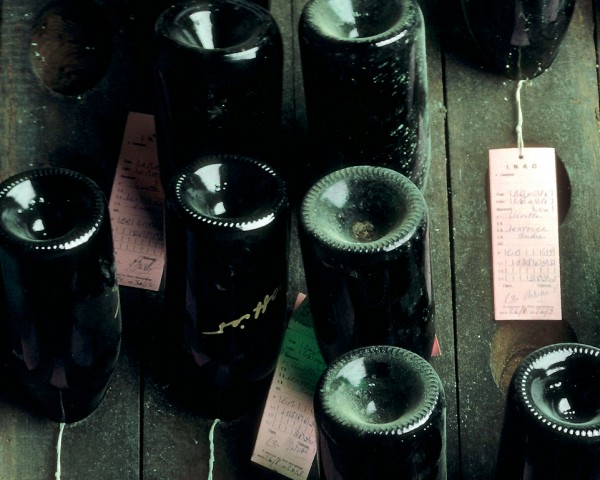
You will find on your travels treasures like Le Brun Servenay Grand Cru Non-Vintage, from Avize, with its delightfully pronounced, amazingly precise citrus notes; Brochet-Hervieux 1995, with hints of pear and orange rind, and a delicate touch of walnut, due in part to the extra bottle age; a Collard Chardelle that is both exuberant and graceful, and ideal with freshly-grilled salmon; and De Sousa & Fils Grand Cru Cuvée des Caudalies, with its rich, almost creamy, long finish. This is but to scratch the surface, and a jaunt here will yield many delights, the vast majority of which never leave the country.
Travelling through the region means an increased appreciation for the symbiotic agricultural component to what is now an international symbol as much as a product. (The CIVC launches between 200 and 300 copyright-infringement cases each year on behalf of the region.) Champagne is a story of innovation and invention, beginning with those famous bubbles, based on that second fermentation in bottle. It’s all too ironic that Dom Pérignon was frustrated by bubbles in his wine (which were looked upon as imperfections), and spent much time trying to get rid of them. The science being then inexact, he found it impossible to retrace his steps and determine what was going on. Still, eventually the bubbles, and the ability to create them year after year, bottle by bottle, became a scientific certainty. Dom Pérignon is buried at the abbey in Hautvillers, where he was a monk and the cellar master. You can visit his tomb, and then stroll about the lovely village and look out at the Marne Valley and the small city of Épernay, where General George Patton liberated the French in 1944. Dom Pérignon has been credited with an amazing set of achievements, including picking the grapes in several passes to get the fruit at its best, inventing the traditional champagne Coquard press, creating a consistent wine by blending from different vineyards, reintroducing cork, and pioneering the use of the stronger English glass, or verre anglais. He also invented the process of la prise de mousse, in which bottles are laid horizontally in the cellar at a constant temperature while the fermentation inside the bottle is done by yeast; this was all in his quest for better quality and richer flavours in the wine.
Veuve Clicquot did her part. While pondering the mysteries of riddling, she decided one day to cut holes in a piece of wood that was intended to be her new dining-room table. She figured the bottle could be inserted into the holes neck first, and the entire process of gently encouraging the lees and other unwanted material to the neck of the bottle could be done more systematically, with much less effort and, crucially, taking up much less space in the cellars. Hence the riddling racks now used in every champagne producer’s cellars.
Responsiveness to foreign markets, where—particularly in Britain—the taste was for ever-drier wines, was also important, since the wine we know today, with its classic acidity and balance, was not what they were drinking even as recent as a century ago. The wines tended to be taken with dessert, since they were a bit sweet and heavy. By the time Eugène Salon decided to make the first chardonnay-only bottling in 1909, a seismic shift had occurred, and the rage for drier wine was underway. And it was intrepid Laurent-Perrier that moved production entirely away from oak fermentation to stainless steel, perhaps the final step in making the flavour profile we most associate with champagne wines today. In less than a century, the wine has become not a dessert wine but more of an aperitif, taken on its own or with a wide range of foods throughout a meal. And then there is the celebratory factor, all based on the prestige of the product, and those bubbles ensuing upon the resounding pop of the cork.
Each village has its own version of the perfect countryside restaurant, such as Auberge Saint-Vincent in Ambonnay (named after the patron saint of vineyard workers), and the larger populations have a spate of great little places to dine. A great example is Épernay itself, with Restaurant Les Cépages and the wonderful La Table Kobus less than a short medieval city block away from each other. Brasserie Flo in Reims (sister to three other Flos, including one in Paris) maintains the French tradition as well.
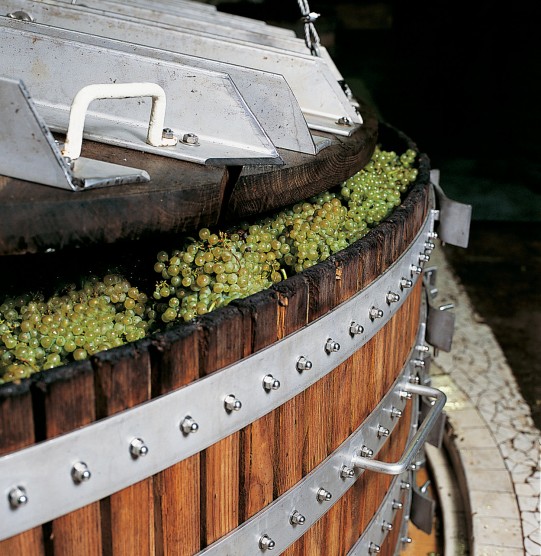
And then there are the fine-dining establishments, so many you will need a few days to explore them. Chef Didier Elena is at Château Les Crayères, a magnificent setting with delicate, flavourful food that creates an experience you won’t forget. At Le Royal Champagne, just outside the village of Champillon, the rooms look out over vast tracts of pristine vineyards, with the hill that keeps the village of Hautvillers safe from chilly winter winds clearly visible in the distance. The restaurant is intimate, but decorated in a grand, classical style, and the Michelin-calibre service is appropriate to chef Philippe Augé’s food here, especially with lots of René Geoffroy rosé to accompany. At L’Assiette Champenoise, in Tinqueux, a suburb of Reims, Arnaud Lallement is the chef, and his exuberant, classically based food is often a revelation. These three places alone merit a discerning traveller’s attention, and when, as with chef Lallement, the house wine poured to pair with the fourth and fifth courses is Krug, you know you are in good hands.
Expect pigeon on your plate, along with that foie gras, grenouille (otherwise known as frog’s legs), pig’s trotters, escargot (mostly farm-raised in the area, though you may find some from the Bourgogne region, too), and plenty of fresh seafood from the Brittany coast, including delicate, rich langoustines (served, memorably, three ways by Lallement, showing how adaptable this crustacean is), lobsters and salmon. Bresse chickens, mushrooms in season, lentils—a rich variety of ingredients showing French cuisine in all its incarnations. As chef Elena explains, “Here, we are between two great culinary regions: Burgundy and Alsace. So we can draw on the traditions of both, and from all of France, really. We can stay within the traditional, always with the finest technique, and do something a little different.”
Touring the Champagne region means experiencing the grandeur of the great houses, and with your pre-set appointments, you will not be disappointed, in the cellars at Taittinger, Veuve Clicquot and Pommery, or the ornate beaux arts rooms at Perrier-Jouët. Reims is home to many of the big names, and on Avenue de Champagne in Épernay, Moët & Chandon, De Venoge and Pol Roger are all in a splendid row. But there is great pleasure in wandering through the various vineyard areas and stopping in the small villages to try various local wines. Restaurants grand and small provide every kind of dining experience, but you always have to keep in mind the French obsession with desserts. Not that that’s a bad thing, of course.
Staying at some of the nicer properties, with their variously starred Michelin chefs, is a memorable way to do things. You can tour all day, visiting an array of locations and types of terrain, return to home base for a tranquil pre-dinner stroll in or near vineyards, and then enjoy three hours or so of gastronomic bliss. Better still, alternate these judiciously with some of the more rustic and isolated places, where you can take part in village life, walking the entire village in a single leisurely paced morning.
The wine world is full of value at various price points, and champagne retains its hold on the world’s imagination as a quintessential luxury item. The truth is that yes, it is an expensive bottle of wine. But there are also great values to be had, given the uniformly excellent quality of the wines, and the surprising and often sublime qualities of vintage and prestige cuvées. Sparkling wines from all over the world, including some very exotic cavas and vintage-specific, nicely aged wines from California and Italy, have their rightful place in the market.
A visit to the Champagne region, however, with all its tranquility and pastoral beauty belying the huge amount of effort and industry that goes into making the wines, is in part a visit not only to another world but another time. So much of what goes on here, day by day, season by season, vintage by vintage, is directly linked to the viticultural efforts of Dom Pérignon and countless others. Your visit will irrevocably enforce an understanding of why, and how, there really is one and only one Champagne.
_______
Never miss a story. Sign up for NUVO’s weekly newsletter here.






